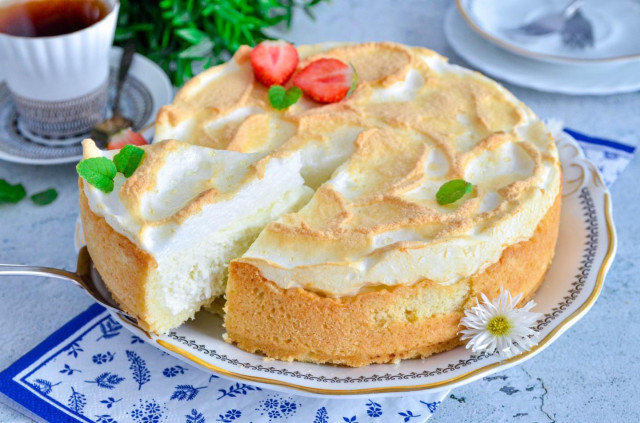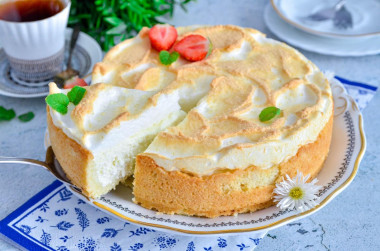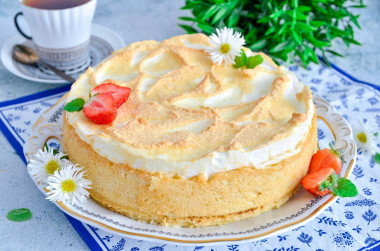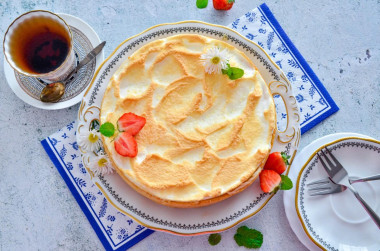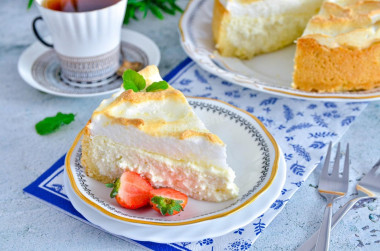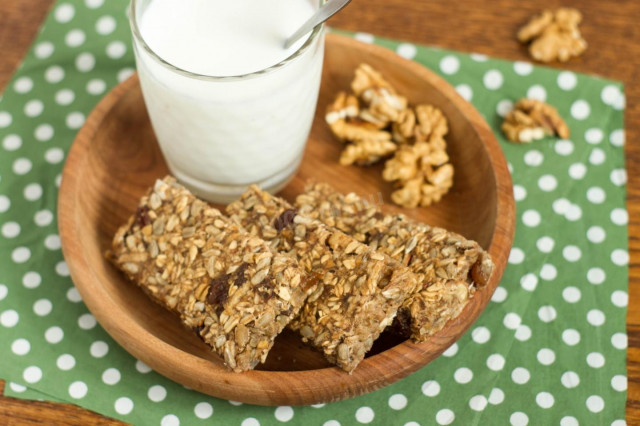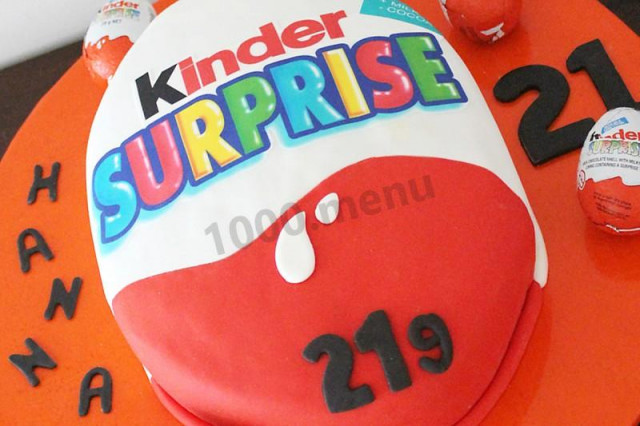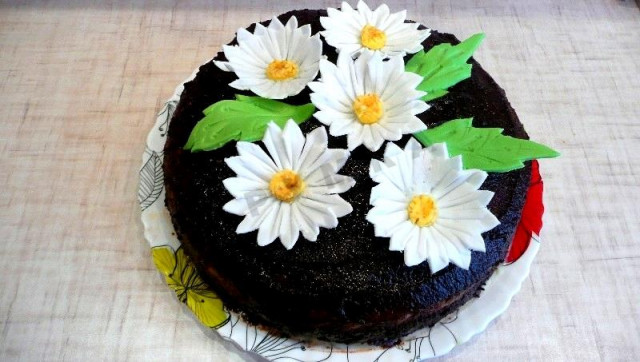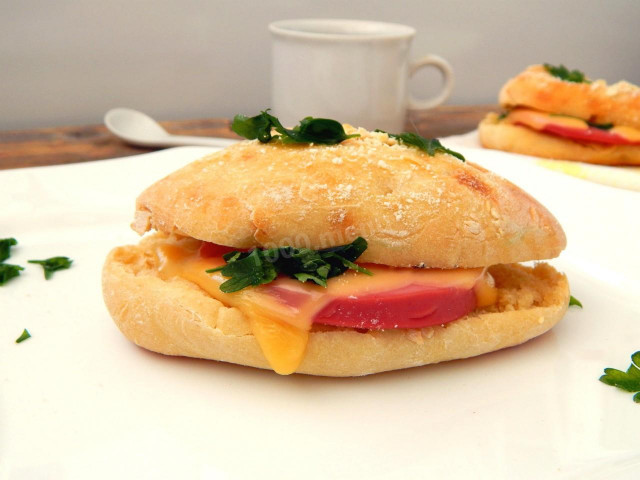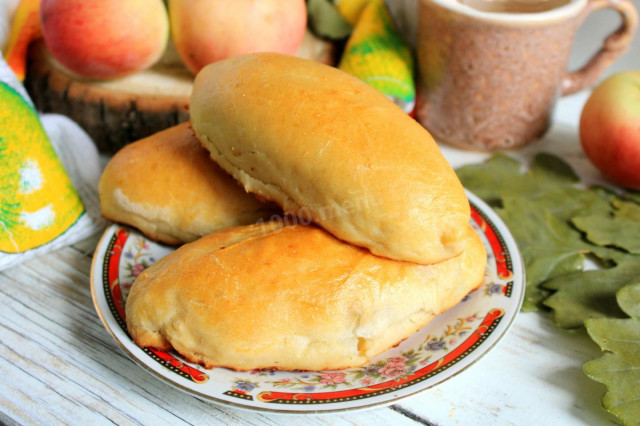Composition / ingredients
Step-by-step cooking
Step 1:
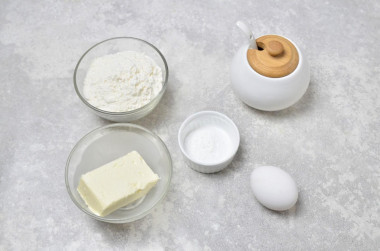
How to make a shortbread cake with meringue? Prepare the products. First for the sand base. Choose high-quality, natural butter, without vegetable additives, corresponding to GOST. 30 minutes before the start of cooking, put it in the freezer so that the oil freezes — it will be easier to grate it.
Step 2:
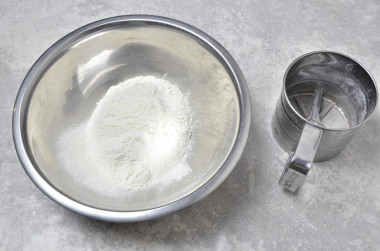
Take a bowl, sift flour into it. This will not only remove possible debris, but also enrich the flour with oxygen, which will make the baking more airy. Pour baking powder into the flour, mix well so that it is evenly distributed.
Step 3:
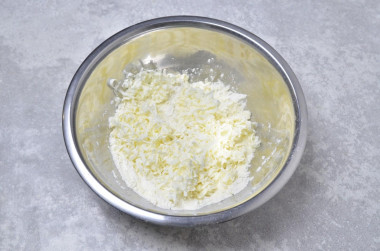
Remove the oil from the freezer. Grate it on a coarse grater in a bowl with flour. To prevent the butter from melting in your hand, roll it in flour, so it will be much more convenient to rub. Then rub the flour and butter with your hands until crumbs.
Step 4:
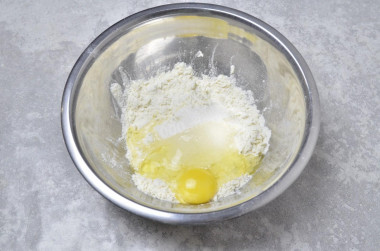
Add sugar to the crumb, I always add a pinch of salt to balance the taste. Beat in the egg. Be sure to wash the eggs before use, as even the seemingly clean shell may contain harmful bacteria. It is best to use food detergents and a brush. Knead the dough.
Step 5:
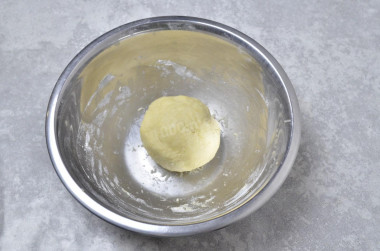
It will gather into a ball very quickly. As soon as this happens, stop kneading — the shortbread dough is not kneaded for a long time, it becomes hard from this. Put the dough in the refrigerator for half an hour.
Step 6:
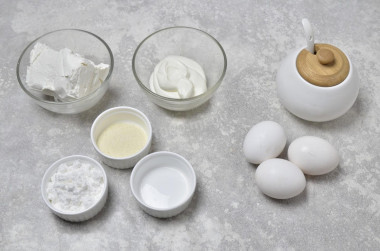
While the dough is cooling, prepare the curd filling. Prepare the products for her. Take cottage cheese and sour cream of any fat content — the calorie content of the dessert will depend on it. Choose fresh, natural dairy products, without vegetable fat substitutes.
Step 7:
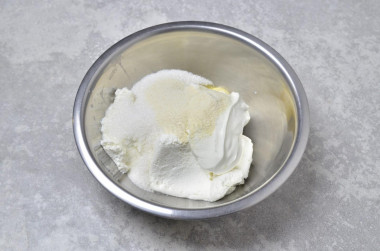
Take a bowl, put the cottage cheese in it. Divide the eggs into yolks and whites. Remove the whites, and add the yolks to the cottage cheese. Put sour cream in the same place, add sugar, semolina and vanilla. Be careful with vanilla — in large quantities it begins to taste bitter. Put quite a bit on the tip of the knife.
Step 8:
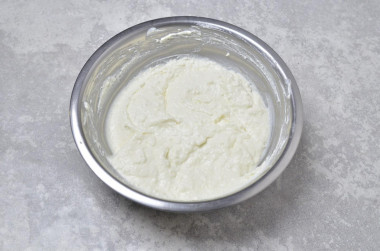
Mix all the ingredients until completely homogeneous. I had a soft, pasty cottage cheese, I stirred the filling with a spoon. If the cottage cheese is coarse and dry, use a blender.
Step 9:
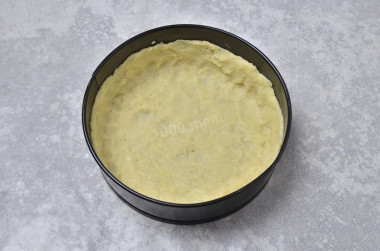
Take the dough out of the refrigerator. Take a baking dish. I have a detachable one, with a diameter of 20 cm. There is no need to lubricate the mold, there is a lot of oil in the dough, it will not stick. Cutting plates of the same thickness from the dough, form the bottom and sides of the pie base.
Step 10:
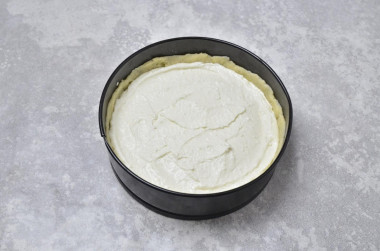
Pour the curd filling onto the base. Preheat the oven to 180 °C. Put the pie in it and bake for 20-30 minutes until lightly golden. The time will depend on the capabilities of your oven.
Step 11:
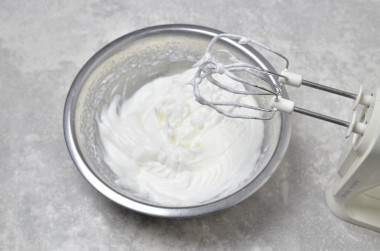
Five minutes before the end of the baking time, start cooking meringue. To do this, beat the whites with a mixer at high speeds, gradually adding powdered sugar to them. Use the powder, because the sugar crystals will not have time to dissolve and will then crunch on your teeth. Beat the whites to strong, stable peaks.
Step 12:
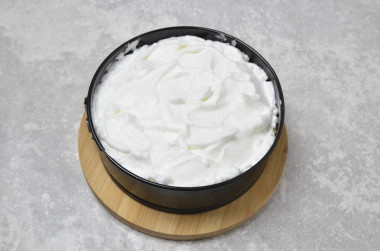
When 20 minutes have passed and the pie is golden, take it out of the oven, do not turn off the heating. Put the whipped whites on top of the pie, you can make a beautiful pattern with a spoon.
Step 13:
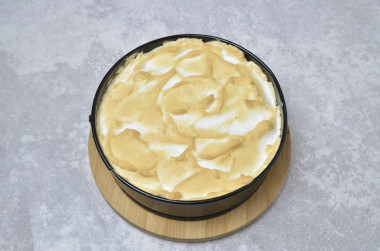
Put the pie back in the oven for 15 minutes. The meringue should turn red, but not too much, watch it. When this happens, take out the cake and cool completely.
Step 14:
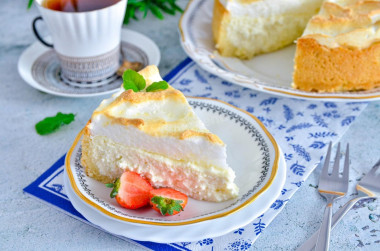
Release the pie from the mold, transfer to a beautiful dish and serve to the table. Bon appetit!
Step 15:
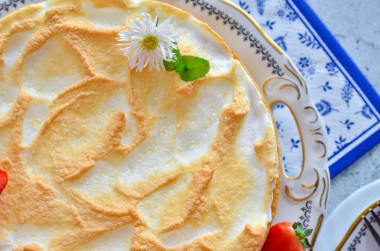
Be prepared for the fact that you may need more or less flour than indicated in the recipe. Focus not on the amount of flour, but on the desired consistency of the dough. To avoid mistakes, read about flour and its properties!
Keep in mind that everyone's ovens are different. The temperature and cooking time may differ from those specified in the recipe. To make any baked dish successful, use useful information about the features of ovens !
In order for the protein to beat well, the eggs should be fresh and chilled (from the refrigerator), and the whipping dishes should be dry and clean, without traces of fat. When you separate the whites from the yolks, make sure that not a drop of yolk gets into the protein. For better whipping, you can add a small pinch of salt or a few drops of lemon juice (vinegar) to the proteins. Beat with a mixer at a minimum speed, increasing the speed as you beat.
Choose enameled, ceramic or glass dishes for whipping (in no case aluminum, as the whites will turn gray!).
Caloric content of the products possible in the composition of the dish
- Sour cream with 30 % fat content - 340 kcal/100g
- Sour cream of 25% fat content - 284 kcal/100g
- Sour cream with 20% fat content - 210 kcal/100g
- Sour cream of 10% fat content - 115 kcal/100g
- Sour cream - 210 kcal/100g
- Chicken egg - 157 kcal/100g
- Egg white - 45 kcal/100g
- Egg powder - 542 kcal/100g
- Egg yolk - 352 kcal/100g
- Ostrich egg - 118 kcal/100g
- Semolina - 340 kcal/100g
- Cottage cheese of 40% fat content - 466 kcal/100g
- Cottage cheese of 20% fat content - 233 kcal/100g
- Cottage cheese of 18% fat content - 226 kcal/100g
- Cottage cheese of 10% fat content - 156 kcal/100g
- Low-fat cottage cheese - 75 kcal/100g
- Cottage cheese with sour cream - 260 kcal/100g
- Fruit cottage cheese - 147 kcal/100g
- Soft dietary cottage cheese - 170 kcal/100g
- Vitalinia cottage cheese - 64 kcal/100g
- Cottage cheese "morning" ( "danone") without sugar - 91 kcal/100g
- Cottage cheese - 156 kcal/100g
- Whole durum wheat flour fortified - 333 kcal/100g
- Whole durum wheat flour, universal - 364 kcal/100g
- Flour krupchatka - 348 kcal/100g
- Flour - 325 kcal/100g
- Granulated sugar - 398 kcal/100g
- Sugar - 398 kcal/100g
- Butter 82% - 734 kcal/100g
- Amateur unsalted butter - 709 kcal/100g
- Unsalted peasant butter - 661 kcal/100g
- Peasant salted butter - 652 kcal/100g
- Melted butter - 869 kcal/100g
- Vanillin - 288 kcal/100g
- Baking powder - 79 kcal/100g
- Egg yolks - 352 kcal/100g
- Powdered sugar - 374 kcal/100g
- Egg whites - 44 kcal/100g

